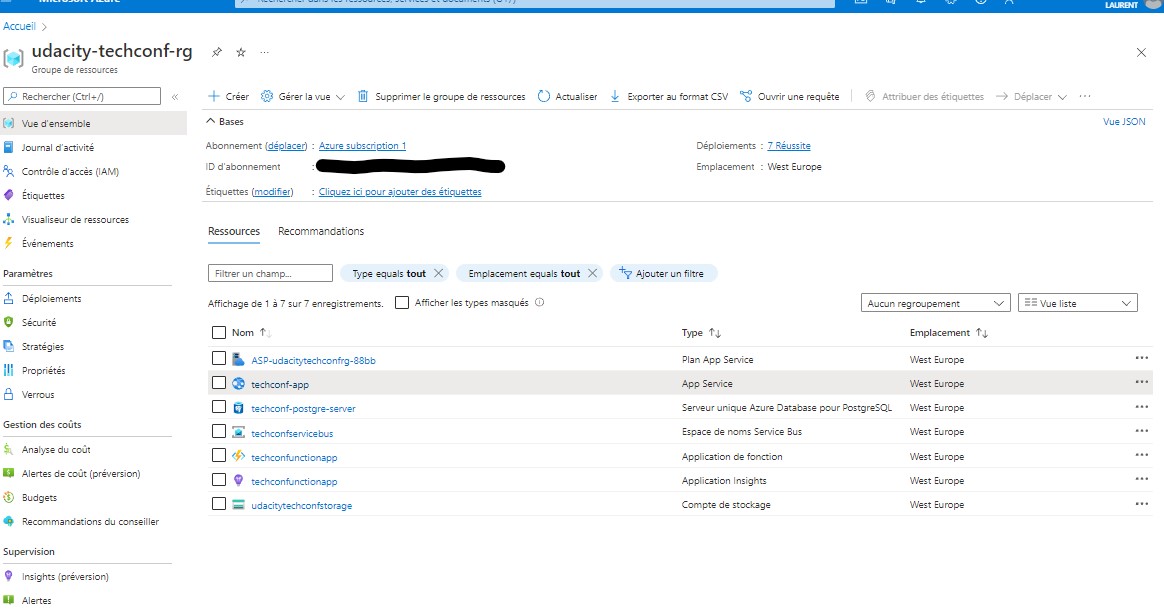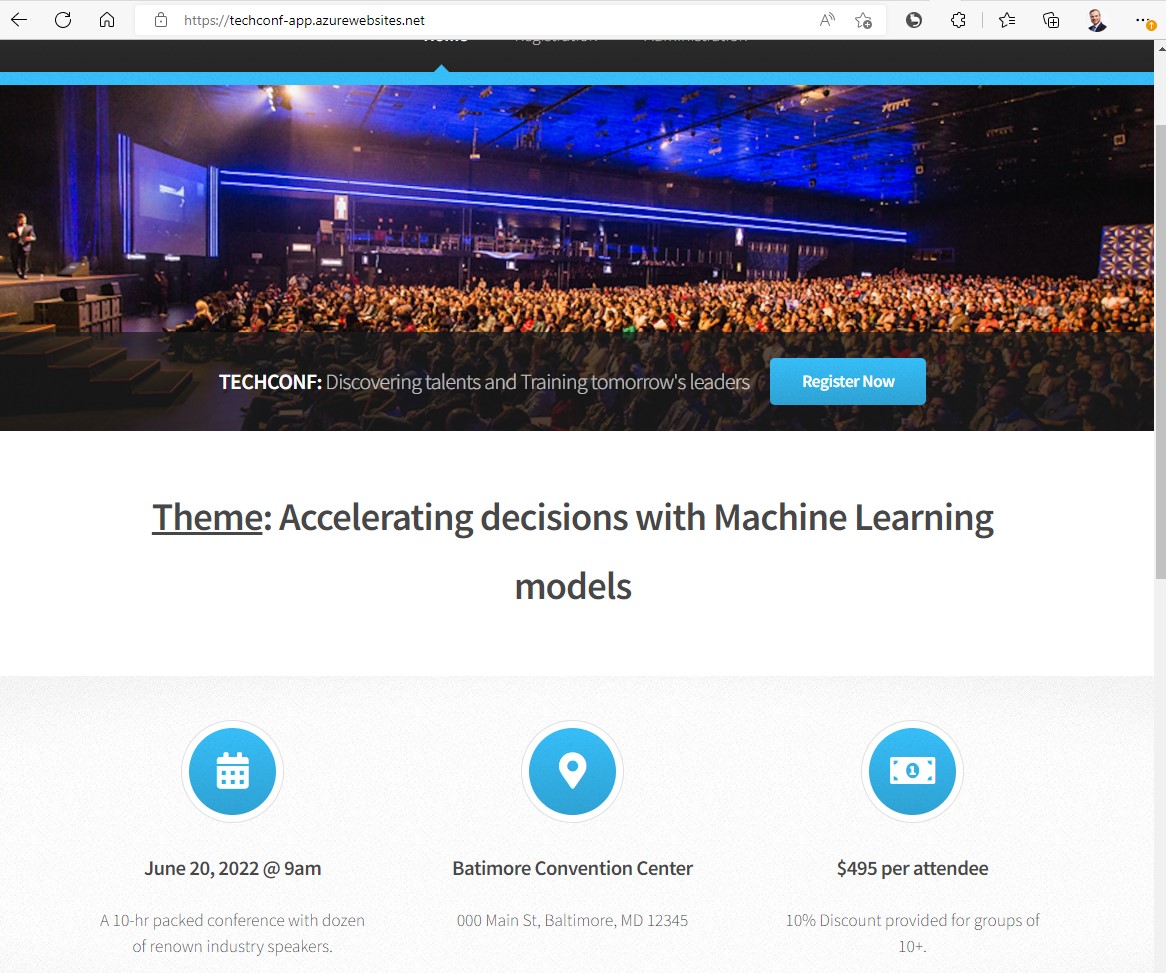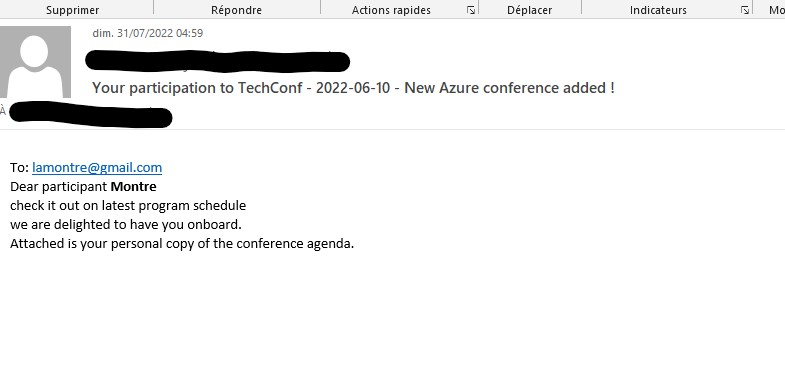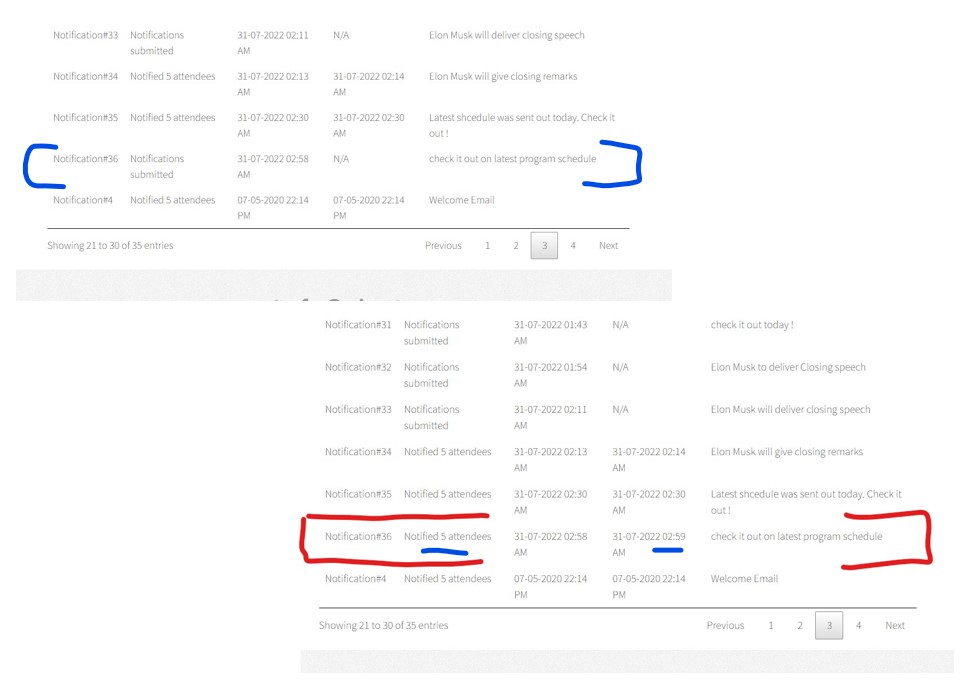This project is part of Udacity Cloud Developer on Azure Nanodegree. It can be found here. It is the third keystone project of the Nanodegree.
The TechConf website allows attendees to register for an upcoming conference. Administrators can also view the list of attendees and notify all attendees via a personalized email message.
The application is currently working but the following pain points have triggered the need for migration to Azure:
- The web application is not scalable to handle user load at peak
- When the admin sends out notifications, it's currently taking a long time because it's looping through all attendees, resulting in some HTTP timeout exceptions
- The current architecture is not cost-effective
In this project, the objectives are to:
- Migrate and deploy the pre-existing web app to an Azure App Service
- Migrate a PostgreSQL database backup to an Azure Postgres database instance
- Refactor the notification logic to an Azure Function via a service bus queue message
warning note indicated by Udacity: the python package psycopg2 does not work directly in Azure; install psycopg2-binary instead to use the psycopg2 library in Azure
The Azure Function should do the following:
- Process the message which is the
notification_id - Query the database using
psycopg2library for the given notification to retrieve the subject and message - Query the database to retrieve a list of attendees (email and first name)
- Loop through each attendee and send a personalized subject message
- After the notification, update the notification status with the total number of attendees notified
Refactor the post logic in web/app/routes.py -> notification() using servicebus queue_client:
- The notification method on POST should save the notification object and queue the notification id for the function to pick it up
Cost analysis of each Azure resource providing an estimate total cost:
| Azure Resource | Service Tier | Monthly Cost |
|---|---|---|
| Azure Postgres Database | Basic,1vCore(s),5 Go | $29.65 |
| Azure Service Bus | Basic | $0.05* |
| Azure WebApp | S1 | $69.35** |
| Azure Function | Consumption plan | *** |
| Azure Storage | Linked to Function | negligeable |
| TOTAL | $99.05 | |
| _____________________________ | ______________________ | ______________ |
-
- per million operations per month unlikely to be exceeded
- ** I use a F1 but such app might use a production plan - I estimate an S1 plan here but a B1 could suffice at a much lower cost ($13) or B2 ($25) possibly cutting down the overall cost estimate by 2
- *** Only pay what I use based on number of executions, length of execution and memory used - Free in year 1
- **** Storage used by the function to store operation information - negligeable amount of data
This can also be evaluated using the convenient Azure Pricing calculator tool available here.
Reasoning behind the architecture selection for both the Azure Web App and Azure Function.
- Web app: The webapp S1 plan appears more practical than a Virtual Machine which would require significant administration and resources. The webapp will be a much more effective option long-term compared to the previous own-premise server situation. Given the type of business, the traffic will remain quite low compared to ecommerce / BtoC businesses having very large customer base. For conference registration needs, the necessary resources should be limited and fully served by a webapp plan. The fully managed webapp service will simplify a lot the operations vs previous situation. This should be a very cost effective solution also preventing downtime risks due to the serverless architecture benefits.
- Azure Function: The azure function will operate in the background, off-loading the webapp with the task to process and send notification emails to participants. This tasks do not require to be executed with immediate effect and is a perfect candidate for a background job. Thanks to the consumption plan, the function will use its own resources and will not tap on the webapp resources. With such configuration, the function will be able to auto scale very effectively while we will be paying only for what we consume. The main benefits: It allows the notification job task to securly run in the background and be scalable thanks to the consumption plan. The execution will improve compared to the previous looping and will eliminate all http timouts.
- Resources implemented
- Front-end web app
- Email notifications using SendGrid and PostGre db
- Notifications tracking in PostGre db



